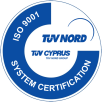The CE marking
We mentioned it in our last blog post about the sale of electrical equipment in the EU: the CE marking. Most sellers have already heard of the CE marking, but few really know what it is truly about. From a marketing point of view, many sellers operate under the assumption “the more the better”, and in case of doubt, decide to affix a symbol rather than leave it. Therefore, this blog post will look more closely at the purpose of the CE marking, the product groups it is used for, and the prerequisites for affixing it.
CE marking: Definition and purpose
CE stands for Conformité Européenne. It is not a quality label, but a marking signifying that the manufacturer has diligently checked a product’s compliance with the security, environmental and health protection requirements applicable in the EU. This is why many products require a CE marking to be marketable in the EU at all.
The above paragraph shows why there is no single laboratory test that will get you the CE marking. The prerequisites for the CE marking depend on the product, resulting from various EU Directives, Regulations or harmonized standards. Obviously, they vary according to the product, which is why various tests have to be performed to ensure that the product is market-compliant and the CE marking may be affixed.
Using the CE marking is free of charge, there are no license fees or the like.
How to find out whether your product is subject to the CE marking obligation
To find out whether your product is subject to the CE marking obligation, and which specific prerequisites have to be met, you basically have two options: Either you dive into the corresponding legal texts and weed through EU Directives, EU Regulations and various Internet forums yourself, or you assign a highly experienced compliance partner such as Tradavo, who will take care of the laborious research for you.
You need assistance?
It is best to book an appointment directly for a free initial consultation.
In principle, the marking obligation applies only if your product is subject to corresponding EU regulations. Which regulations, if any, apply for your product, depends on the following three factors, among others:
- product category (e.g., personal protective equipment, children’s toys)
- functionality of the product (e.g., WiFi)
- age group (especially if the target group is age 14 or younger)
EN and DIN standards: Definitions and differences
The acronym EN stands for “Europäische Norm” [European standard], whereas DIN is the acronym for the Deutsches Institut für Normung [German Institute for Standardization]. And that is, in fact, the greatest difference: European standards are developed by the various European standards organizations. The DIN, on the other hand, represents the German interests on the European level. Both EN and DIN standards are often optional and can therefore be used for marketing purposes in Amazon listings. However, there are harmonized standards, too. They result from European legislation. Consequently, they must obligatorily be met, and all the member states of the EU assume that the product meets the requirements of the standard. An example of a well-known European standard is EN 71-3. It deals with the migration of certain elements in toys.
Which EU Directives and Regulations give rise to labeling requirements?
Until now, we have limited ourselves to theoretical aspects. To illustrate the whole topic of the CE marking more clearly, we have listed some of the most important legal regulations, with examples of products. If your product is subject to one or several of these regulations, it has to undergo the corresponding lab testing and, if it passes, be equipped with the CE marking.
- RoHS Directive: e.g., HDMI cables, power banks, headphones
- Low Voltage Directive: e.g., mixers, toasters, electric kettles
- EMC Directive: e.g., animal drinking fountains, adapters, lamps
- Radio Equipment Directive: e.g., baby monitors, radios, Bluetooth speakers
- Toy Safety Directive: e.g., stuffed toys, card games, board games, bows and arrows
- Regulation on personal protective equipment: e.g., FFP2 masks, safety vests, water wings
- Machinery Directive: e.g., awnings, height-adjustable desks, treadmills

CE marking: When is it permitted to be affixed?
Say you already have a product in mind. Now you need to find out whether is falls under the scope of application of one or several regulations. If you have already found a manufacturer, they may already be able to provide useful test reports. We are going to take a closer look at this in Part 2 of the CE marking guide.
If your manufacturer does not yet have any test reports, you are responsible for verifying that your products comply with the respective regulations. Since the required laboratory tests vary significantly, depending on the product, the laboratory fees for the necessary tests vary widely as well. As a reference value, testing for toys according to EN 71 ranges from EUR500 to EUR2,000, and from EUR800 to EUR2,500 for electrical equipment falling under the scope of the RoHS and EMC Directives. The exact costs depend on the number of components or materials to be tested.

The CE marking always comes with a declaration of conformity. Details about this declaration are provided in this blog post. Furthermore, a user manual has to be enclosed with your product, unless it can safely be used without one. The manual has to comply with the applicable standards and be designed to be user-friendly. Results of the risk assessment should be taken into account accordingly, as should information on the intended use, residual risks, and other safety instructions. If there are foreseeable misuses, they should also be included in the user manual.
The content of the technical documentation of your product is determined by the respective regulations and applicable directives. In principle, it has to include documents such as the user manual, the declaration of conformity, exploded-view drawings, circuits, and an overview of critical components.
When is it not permitted to affix the CE marking?
If a product does not fall under the scope of application of corresponding legislation that requires a CE marking, it must not be equipped with such marking.
If a product falls under the scope of the relevant legislation and is therefore required to be equipped with the CE marking, the marking must not be affixed if the documentation of the product is incomplete.
Part 1 of our comprehensive CE marking guide already gave you quite a bit of information about the CE marking, its purpose, and the corresponding EU Directives and Regulations. In part 2 of the guide, we will focus on the certificates that you need from your manufacturer, on the question why so many manufacturers try to cheat with the CE marking, and on the risks you run when the authorities become involved because there is a problem with the CE marking of your products.
Who wrote this article?
As an author, Christina fills the blog section of our website with exciting and informative articles, so that our readers can always take care of product compliance in their company in the most well-informed way.
- Christinahttps://compliance.tradavo.eu/en/author/epywxge/
- Christinahttps://compliance.tradavo.eu/en/author/epywxge/
- Christinahttps://compliance.tradavo.eu/en/author/epywxge/
- Christinahttps://compliance.tradavo.eu/en/author/epywxge/







